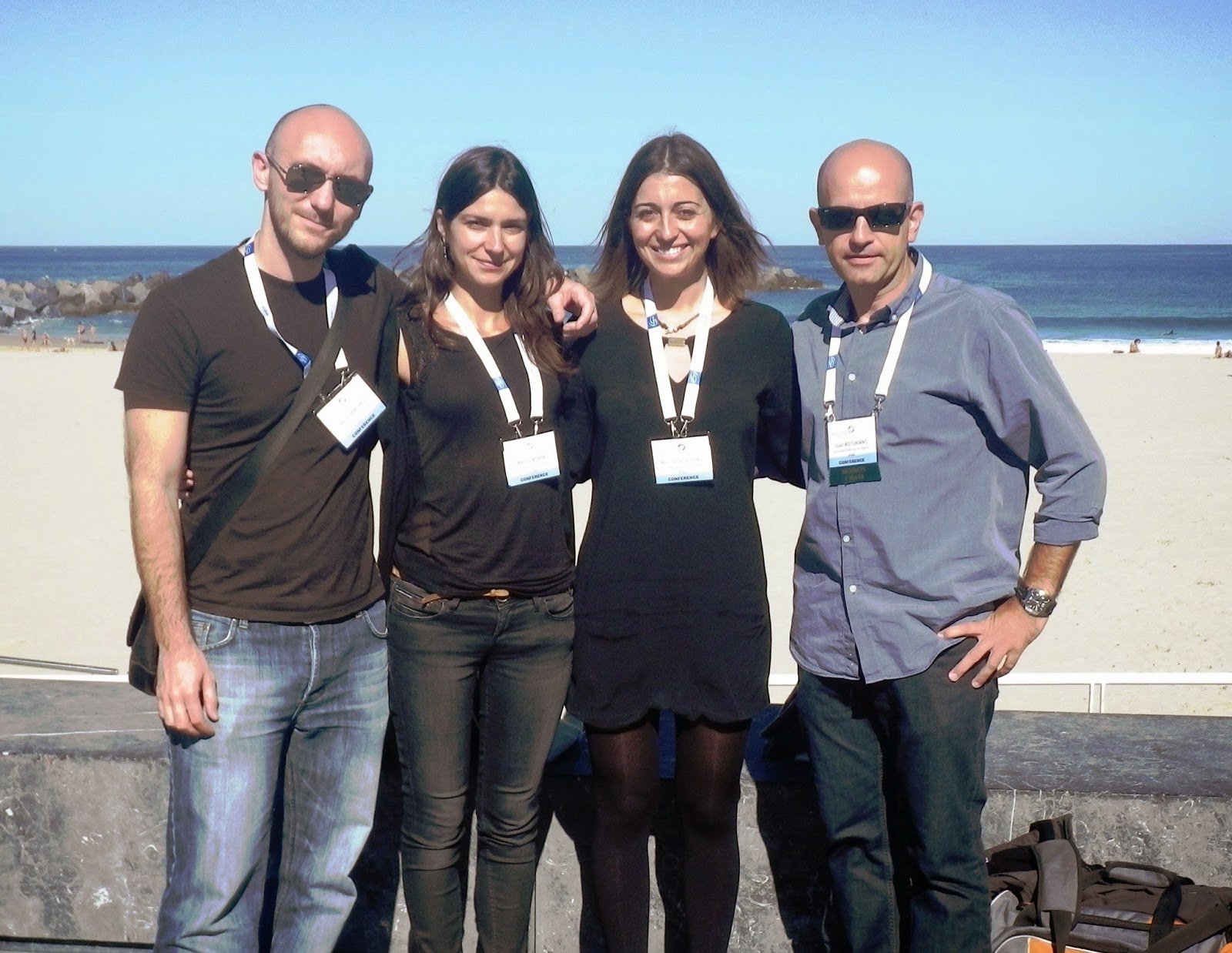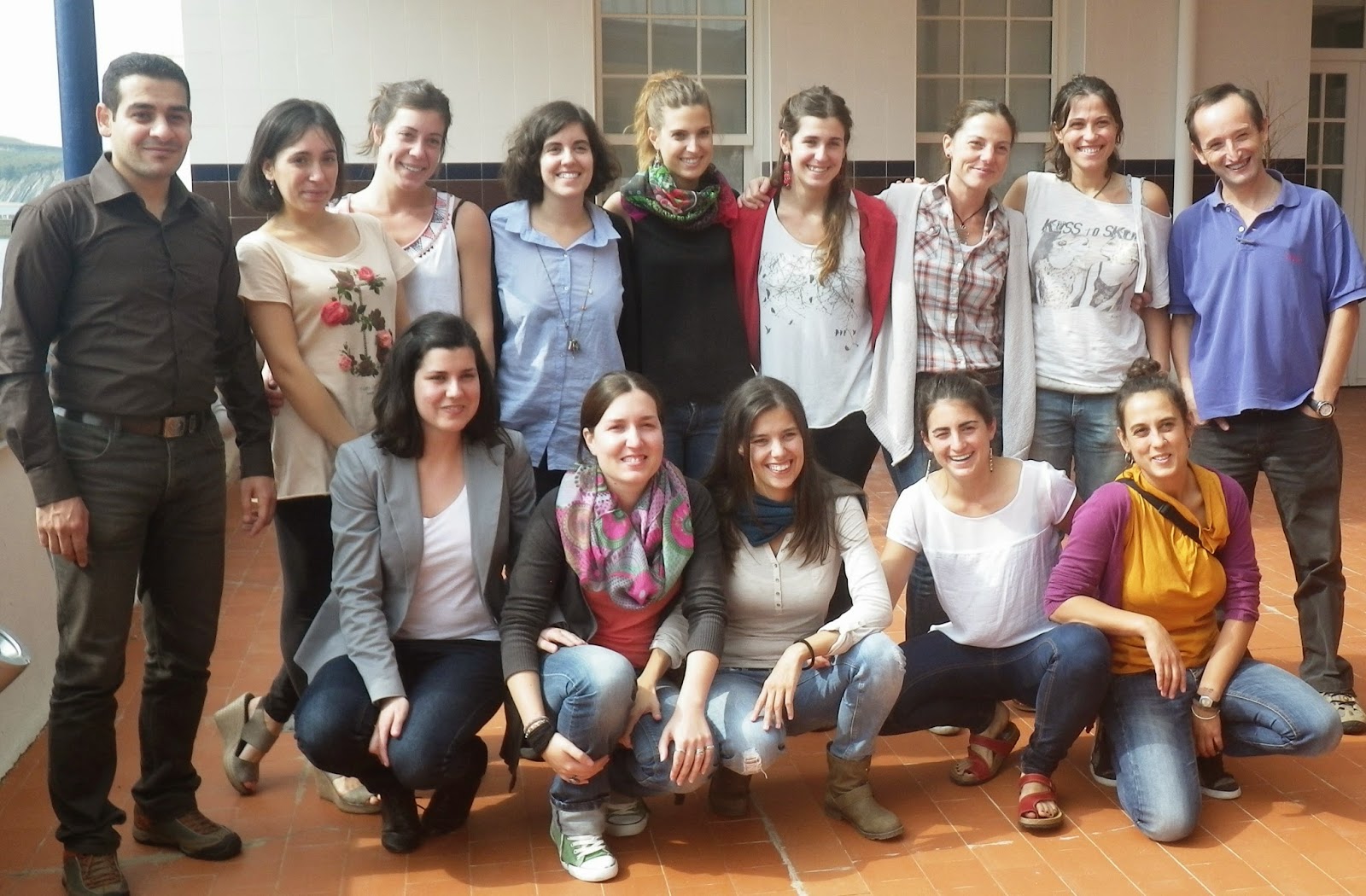
Del 14 al 17 de octubre hemos participado en San Sebastián en este congreso organizado por la European Aquaculture Society y AZTI-Tecnalia.
David Sánchez Peñaranda, Mamen Vílchez, Marina Morini, Pepa Bayarri y yo mismo hemos participado en las sesiones dedicadas a aspectos reproductivos.
Así, en la sesión que hemos organizado desde AQUAGAMETE: Biology of aquatic species gametes, y en la que he tenido el gusto de actuar como Chair junto a nuestro colega húngaro Ákos Horváth, hemos sido coautores de 4 comunicaciones orales:
● AQUAGAMETE COST
Action. Resume of the first grant period (March 2013 – May 2014)
J.F. Asturiano, M.J. Bayarri, Á. Horváth
● Identification of major
proteins from seminal plasma of hormone-induced sexual mature European eels
(Anguilla anguilla). Correlation with sperm quality
M.C. Vílchez, D. Pla, V. Gallego, L. Sanz, L. Pérez, J.F. Asturiano,
J.J. Calvete, D.S. Peñaranda
● Comparison of two validated methods for European eel (Anguilla anguilla)
sperm cryopreservation using epigenetics, spermatozoa motility and morphometry
M.C. Vílchez, M. Morini, D.S. Peñaranda, L.
Pérez, A. Depincé, E. Kása, C. Labbé, Á. Horváth, J.F. Asturiano
● Molecular markers of oocyte differentiation and maturation in European
eel (Anguilla anguilla) during artificially induced oogenesis
L. Martínez-Miguel,
I. Rojo-Bartolomé, M.C. Vílchez, J.F. Asturiano, L. Pérez, I. Cancio
y dos posters:
● Vitrification of the
sperm of European eel (A. anguilla): investigation of different protocols
E. Kása, M.C. Vílchez, M. Morini, D.S. Peñaranda, L. Pérez, J.F.
Asturiano, B. Urbányi, Á. Horváth
● Effect of temperature regime
on the vitellogenesis of the European eel (Anguilla anguilla)
M. Morini, M.C. Vílchez, A.G. Lafont, D.S. Peñaranda, V. Gallego, S.
Dufour, J.F. Asturiano, L. Pérez
Además,
en la sesión dedicada a las anguilas (Eels – research progress) hemos
presentado otras 4 comunicaciones orales:
●Intracellular potassium and
sperm motility in the European eel
L. Pérez, M.C.
Vílchez, V. Gallego, M.P. Herráez, M. Morini, R. Baeza, D.S. Peñaranda, J.F.
Asturiano
●Modulatory effect of
temperature on ovulation and larval development in the European eel
M.C. Vílchez, I.
Mazzeo, R. Baeza, D.S. Peñaranda, V. Gallego, J.F. Asturiano, L. Pérez
●Molecular characterization and expression of progestin receptors and
PLCZ1 in European eel through spermatogenesis
M. Morini, D.S. Peñaranda, M.C. Vílchez, V. Gallego, R.
Nourizadeh-Lillabadi, J.F. Asturiano, F.-A. Weltzien, L. Pérez
● Fatty acids influence male reproductive
performance in European eel
I.A.E. Butts, R. Baeza, J.G.
Støttrup, M. Krüger-Johnsen, C. Jacobsen, L. Pérez, J. Tomkiewicz, J.F.
Asturiano
y dos posters:
● Fatty acid dynamics during induced sexual maturation in male European
eel. Relationship with steroids and sperm quality parameters
R. Baeza, M.C. Vílchez, V. Gallego, D.S. Peñaranda, H. Tveiten, L.
Pérez, J.F. Asturiano
● Effect of the
probiotic Lactobacillus rhamnosus on sperm quality and on the expression of
genes involved in European eel (Anguilla anguilla) spermatogenesis
S. Santangeli, M.C.
Vilchez, F. Maradonna, G. Gioacchini, C. Verdenelli, V. Gallego, D.S.
Peñaranda, H. Tveiten, L. Pérez, O. Carnevali, J.F. Asturiano
Gracias
a todos nuestros colegas, colaboradores y coautores.










